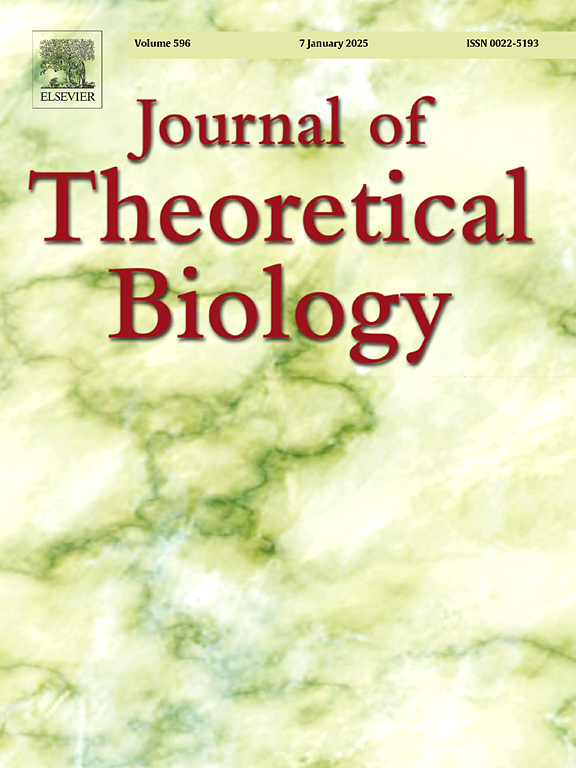用SPEED建模:流行病早期检测的随机预测器。
IF 2
4区 数学
Q2 BIOLOGY
引用次数: 0
摘要
新出现的传染病爆发的频率继续上升,需要公共卫生决策的预测框架。本文引入了基于经典易感-感染-恢复模型的早期流行病检测随机预测模型SPEED (Stochastic Predictor of Early Epidemic Detection),采用类似gillespie的算法模拟早期随机疾病传播。SPEED结合了基于感染时间和从全科医生咨询到实验室确认的滞后的个人水平检测概率。一旦发现一个病例,该模型通过加强检测和缩短检测时间,动态调整以适应公共卫生反应。SPEED提供两个关键功能。首先,作为一种统计推断工具,在检测到少量病例后精炼再现数估计。SPEED推理使用指定的先验分布为再现数提供可靠的后验估计。第二,模拟在特定繁殖数下的流行情况,以构造后续检测的时间分布。该模型用于评估二次计时如何能够排除更高的复制数值。与加强监测情景下的模拟比较表明,该模型在评估对最初疫情传播的应对效果方面具有实用性。我们的研究结果表明,SPEED适用于2023年11月23日通过常规流感监测检测到的单一甲型h1n1流感病例。本文章由计算机程序翻译,如有差异,请以英文原文为准。
Modelling with SPEED: a Stochastic Predictor of Early Epidemic Detection
The frequency of emerging infectious disease outbreaks continues to rise, necessitating predictive frameworks for public health decision-making. This study introduces the Stochastic Predictor of Early Epidemic Detection (SPEED) model, an adaptation of the classic Susceptible-Infected-Recovered model, employing a Gillespie-like algorithm to simulate early-stage stochastic disease transmission. SPEED incorporates individual-level detection probabilities based on the infection time and the lag from GP consultation to lab confirmation. The model dynamically adjusts to public health responses by enhancing testing and reducing detection times once a single case has been identified. SPEED serves two key functionalities. First, as a statistical inference tool refining reproduction number estimates following the detection of a small number of cases. SPEED inference uses specified prior distributions for the reproduction number to provide reliable posterior estimates. Second, to simulate epidemic scenarios under specified values of the reproduction number in order to construct a distribution of the time to subsequent detections. The model is used to evaluate how second case timings can rule out higher values of the reproduction number. Comparisons with simulations under heightened surveillance scenarios demonstrate the model’s utility in assessing response efficacy on the initial outbreak spread. Our results demonstrate SPEED applied to a single case of influenza A(H1N2)v, detected through routine flu surveillance on the 23rd November 2023.
求助全文
通过发布文献求助,成功后即可免费获取论文全文。
去求助
来源期刊
CiteScore
4.20
自引率
5.00%
发文量
218
审稿时长
51 days
期刊介绍:
The Journal of Theoretical Biology is the leading forum for theoretical perspectives that give insight into biological processes. It covers a very wide range of topics and is of interest to biologists in many areas of research, including:
• Brain and Neuroscience
• Cancer Growth and Treatment
• Cell Biology
• Developmental Biology
• Ecology
• Evolution
• Immunology,
• Infectious and non-infectious Diseases,
• Mathematical, Computational, Biophysical and Statistical Modeling
• Microbiology, Molecular Biology, and Biochemistry
• Networks and Complex Systems
• Physiology
• Pharmacodynamics
• Animal Behavior and Game Theory
Acceptable papers are those that bear significant importance on the biology per se being presented, and not on the mathematical analysis. Papers that include some data or experimental material bearing on theory will be considered, including those that contain comparative study, statistical data analysis, mathematical proof, computer simulations, experiments, field observations, or even philosophical arguments, which are all methods to support or reject theoretical ideas. However, there should be a concerted effort to make papers intelligible to biologists in the chosen field.

 求助内容:
求助内容: 应助结果提醒方式:
应助结果提醒方式:


